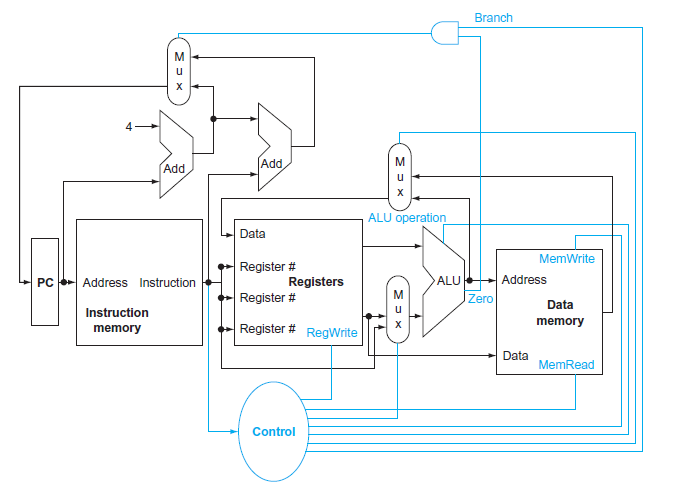When processor designers consider a possible improvement to the processor datapath, the decision usually depends on the
Question:
Figure 4.2

Consider the addition of a multiplier to the ALU. Th is addition will add 300 ps to the latency of the ALU and will add a cost of 600 to the ALU. Th e result will be 5% fewer instructions executed since we will no longer need to emulate the MUL instruction.
1. What is the clock cycle time with and without this improvement?
2. What is the speedup achieved by adding this improvement?
3. Compare the cost/performance ratio with and without this improvement.
Fantastic news! We've Found the answer you've been seeking!
Step by Step Answer:
Related Book For 

Computer Organization and Design The Hardware Software Interface
ISBN: 978-0124077263
5th edition
Authors: David A. Patterson, John L. Hennessy
Question Posted:





